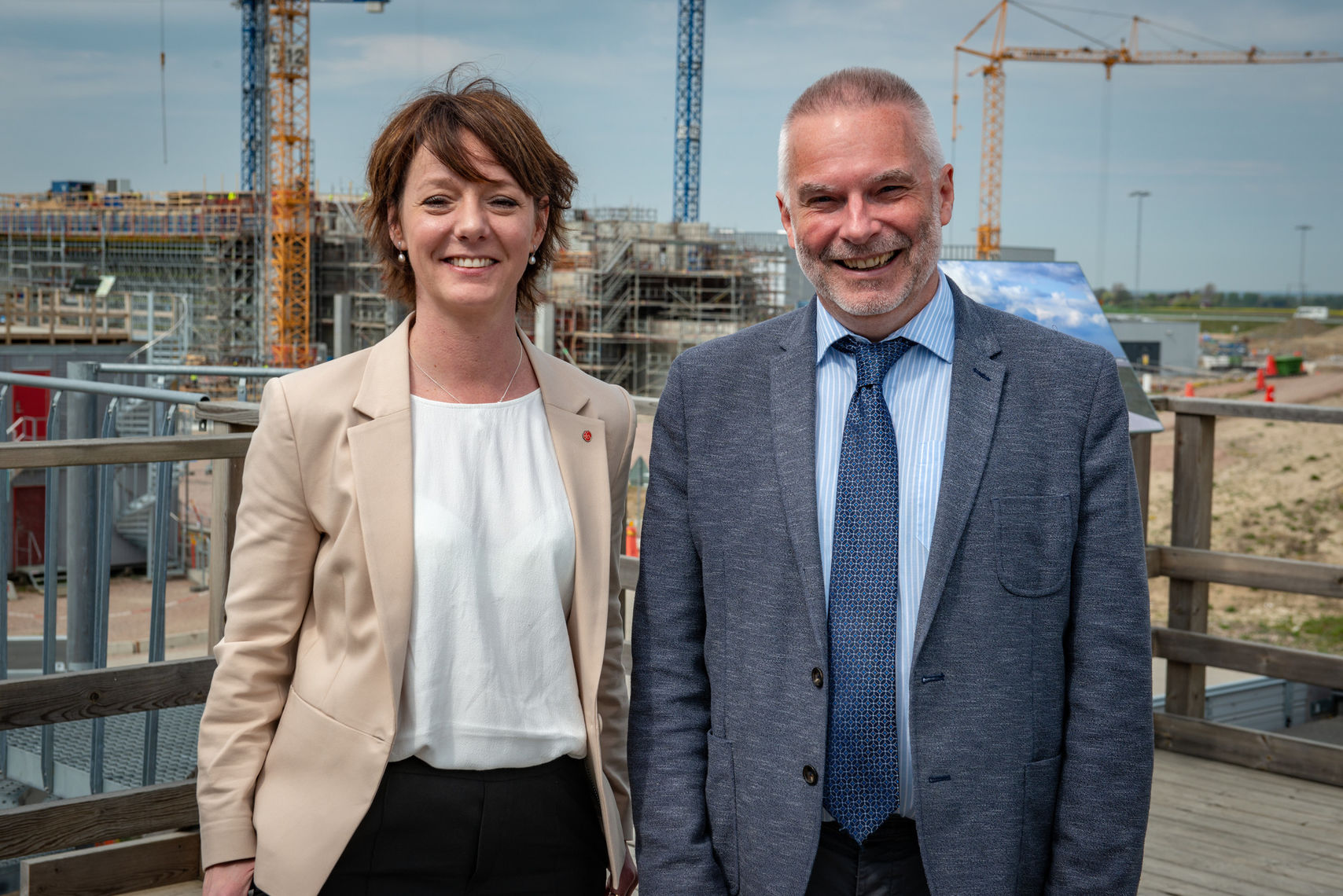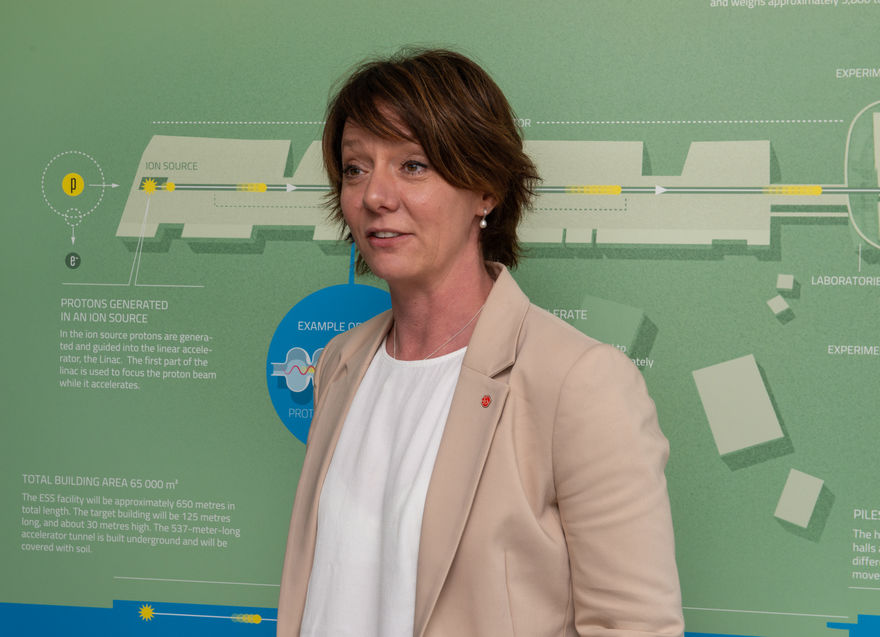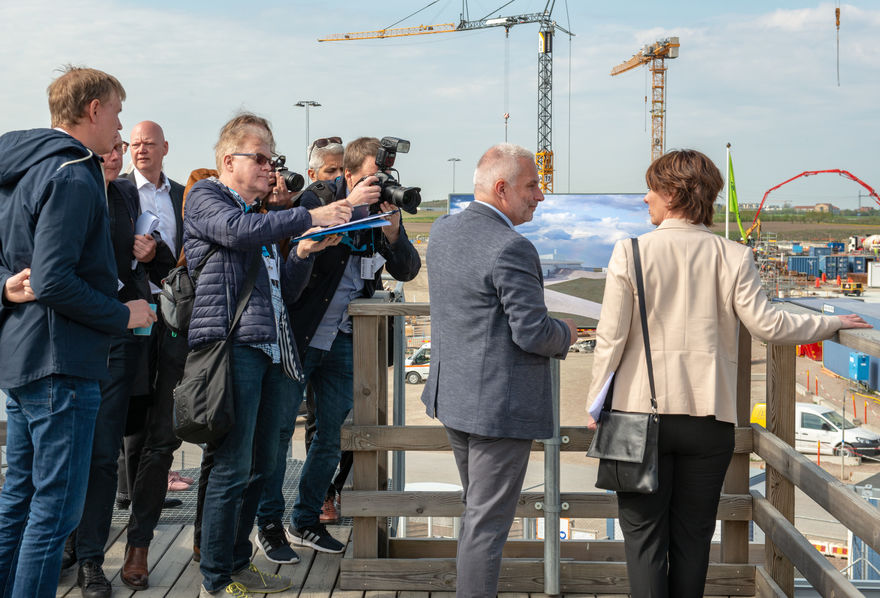
The Swedish Minister of Higher Education and Research, Matilda Ernkrans, visited European Spallation Source (ESS) today. It was the new Minister's first visit to the research facility.
Research Minister Matilda Ernkrans, who came to office in January, began her two-day visit to Lund by coming to the ESS Construction site on the outskirts of the city. She was welcomed by ESS Director General, John Womersley, and ESS’s Head of Host State Relations, Pia Kinhult. John Womersley explained ESS’s unique research opportunities and what it means for Sweden to host this world-leading research facility. From the ESS viewing deck, the Minister could also see for herself how the construction is progressing.
“We are pleased to welcome the Swedish Minister of Research and personally show her all the significant advances in the construction of ESS”, says John Womersley, ESS Director General. “Sweden's hosting and clearly demonstrated support of ESS is crucial for us to be able to open for researchers from around the world as planned in 2023.”
In May last year, the Swedish government presented its national ESS strategy, with the aim of creating optimal conditions for relevant stakeholders in Sweden - such as academia, research financiers and industry. In conjunction with today's visit to ESS, the Research Minister also presented the decision to establish an ESS Office.
“ESS provides significant future opportunities for Sweden, and therefore we will now establish a new national ESS Office, so that Swedish research and industry obtain the best conditions to accomplish groundbreaking new discoveries and create more jobs”, says Matilda Ernkrans, Swedish Minister for Higher Education and Research. “The Swedish hosting of ESS is an important part of our goal to establish Sweden as one of the world's leading research and innovation countries, and a leading nation of knowledge.”
The ESS facility is currently 58% complete, and the work continues at an unabated rate. In 2019, deliveries and installations of technical equipment from the European member states will continue as planned. Among other things, large technical components for the accelerator tunnel are expected to be delivered from the ESS member states France, Italy and Spain. During the second half of the year, installations will also begin in the target station building and in the long instrument hall.


























